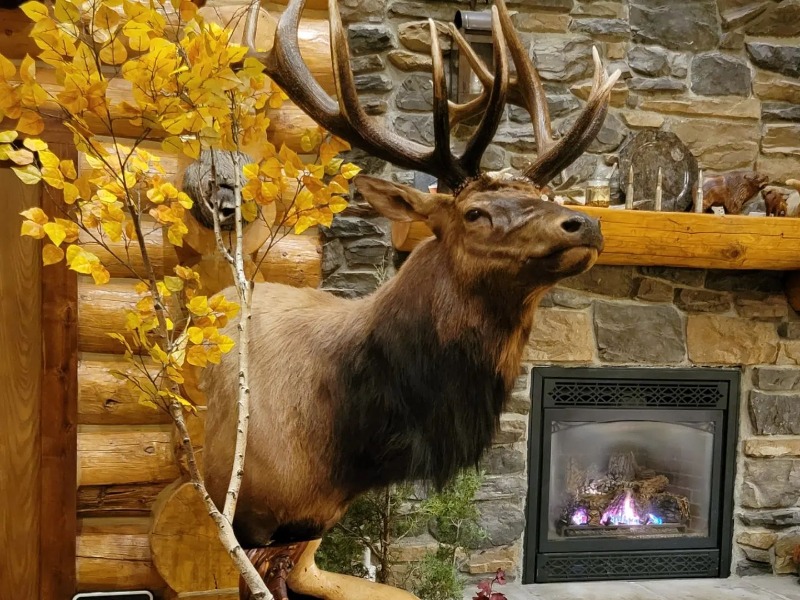
Planning a guaranteed elk hunt at Rocky Mountain Elk Ranch is an exciting adventure, and one part of preserving those memories includes elk taxidermy. Whether you’re a seasoned hunter or heading out for your first guided trip, understanding the taxidermy process ensures your trophy is handled carefully. Here are answers to ten of the most frequently asked questions to help you prepare for your hunt and display your elk proudly.
10 Frequently Asked Questions About Elk Taxidermy
1. How Long Does the Elk Taxidermy Process Take?
Elk taxidermy isn’t a quick process—it’s an art. Most mounts take 9 to 12 months, depending on the taxidermist’s workload and the complexity of your request. Be patient; the wait is worth it! Our taxidermist, Henry’s Fork Taxidermy, has some unique options and can do plaque mounts, European mounts, and even a shoulder mount (with a cape exchange) in 24 hours so you may take your mount home with you when you leave so it can be well worth it to use his services. We also work with you if you want to use your taxidermist at home.
2. What Mount Styles Are Available?
There’s no shortage of options to showcase your elk. Popular choices include plaque mounts, European mounts, shoulder mounts, pedestal mounts, and even full-body displays. Talk with your taxidermist about what best suits your space and style.
3. How Do I Care for My Elk After the Hunt?
Field care is critical for high-quality results. Be careful when skinning the elk not to puncture or cut holes in the hide. Keep the hide clean, cool it quickly to prevent spoilage, and avoid dragging it. The better your preparation, the better your mount will look.
4. How Much Does Elk Taxidermy Cost?
Costs vary based on the type of mount and the taxidermist’s experience. Shoulder mounts generally range from $1800 to $2300, while full-body mounts can exceed $8,500. European and plaque mounts are around $575. Know your budget before making a decision.
5. What’s the Best Way to Transport My Elk?
Careful transportation is essential to avoid damage. Wrap the hide/cape in a tarp or place them in a cooler on ice. Keeping everything clean, cold, and protected ensures the taxidermist can work with pristine materials. If you have access to a freezer and can freeze the cape, that is the best way to preserve it for the taxidermist.
6. What If My Hide or Antlers Are Damaged?
Accidents happen, but many taxidermists can repair minor damage. Scrapes on the hide or small chips in the antlers are often fixable. Still, handle your elk carefully to minimize issues.
7. How Do I Find a Good Taxidermist?
Choosing the right taxidermist is as important as the hunt itself. Look for someone experienced with large game, review their portfolio, and read customer testimonials. Quality work is worth the investment.
8. How Should I Maintain My Mount?
Dust your elk mount regularly using a soft cloth or brush. Keep it away from direct sunlight, heat, and high humidity to preserve its colors and structure.
9. Can I Request a Custom Pose?
Absolutely! Many taxidermists allow customizations to make your mount truly one-of-a-kind. Discuss your vision beforehand so the final product aligns with your expectations.
10. Are There Legal Considerations?
Always ensure your hunt complies with state and federal regulations regarding wildlife transport and taxidermy. Properly tagging and documenting your elk will keep you on the right side of the law.
Guaranteed Elk Hunting Guides and Outfitters in Idaho
At Rocky Mountain Elk Ranch, your guaranteed elk hunt is an unforgettable experience, and taxidermy allows you to cherish those memories for a lifetime. By understanding the process, you’ll be well-prepared to care for your trophy and find the right taxidermist to bring it to life. We use Henry’s Fork Taxidermy for a very quality job. Check their Facebook page for examples and ideas for your next mount. Start planning your hunt today, and let your elk tell its story for generations!
